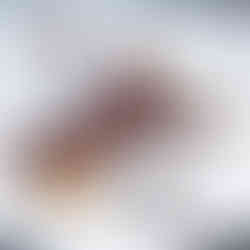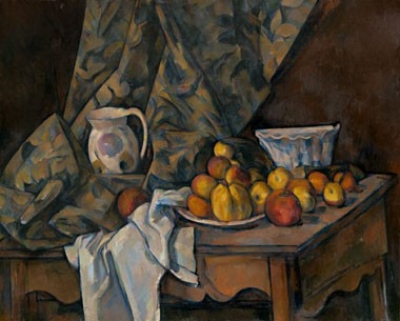From Food Paintings to #FoodPorn: The Beauty Behind Food
- Jeydie Woloszczuk
- Sep 12, 2022
- 5 min read
Admit it, you are one of those people who take pictures of their meals and lament over having to destroy such a beautifully made dish by eating it. You share it on social media and express how incredibly attractive it is … to the eyes and stomach.
Sharing a food image has become such a huge social norm that #FoodPorn now boasts over 280 million posts on Instagram.
What is it about food that makes us want to take pictures and share them with other people? Surprisingly, we’ll have to go back a few hundred years to see where it all started.
From Opulence to Ordinary
Humans have been drawing, painting, and taking pictures of food for thousands of years, but the intention and social function of these images vary. Depictions of food were found on the walls of Egyptian pyramids by archaeologists, who believed that this was a form of funerary art in which the images would provide nourishment to the dead in the afterlife. Whereas, food art during the Zhou Dynasty (1046 - 771 B.C.) illustrated various methods of preparation. The “Eight Delicacies” showed eight kinds of ingredients, such as pork, rice, mutton, and beef, and the different cooking methods. Following the Chinese Dynasty, between 480 - 323 B.C., the Greeks and Romans painted realistic fruit bowls on canvas to show off their wealthy status.
Dropping into the era of the Renaissance, the scientific movement influenced artists to look at their surroundings in a logical sense by creating still life object paintings to further their understanding of the world. Among the varying art subjects, artists took a special interest in food, with Spain, Italy and the Netherlands dominating the food art scene. The Dutch Realist artists led the movement and gave the world such notable art pieces as the Still Life with Fruit, Oysters and Porcelain Bowl by Abraham Mignon, Still Life with Fruit and Lobster by Jan Davidsz. de Heem and Still Life with Cheese by Floris Claesz van Dijck. Each showcases an array of food set upon a dining table draped in satin cloth, surrounded by fruit arrangements. The cloth and the opulent fruit arrangement show a particular lifestyle – like a scene out of a banquet or a wedding.
Many of these paintings were done for the wealthy and were adorned in their homes to show off their class and status. The paintings showcased what the wealthy were able to get in fine food, such as specialty cheeses and exotic fruits and were painstakingly created with the utmost realism by the artist. With the use of oil paint, painters were able to use the finest colors and make adjustments when needed since oil paints dry slower than other mediums. These paintings would continue in style until about the 1800s, when the Expressionist artists stepped in and paved a way for another art movement. The depictions went from the wealth associated with lobsters and quinces to the more mundane, such as with oranges and apples.
Paul Cezanne was a pioneer in the provincial food still life genre, having adopted the movement with fervor. In his paintings, instead of draped tables with lobsters, he depicted baskets and cracked bowls filled with apples and pears. Even Vincent Van Gogh took a shot at it, with his painting Still Life with Carafe and Lemons. Food, during this time, was an accessible way to play with color and painting styles.
As we progress to the mid-1950s, we see artists like Andy Warhol and Ralph Goings paint with modern food objects, such as the infamous Campbell soup cans. At this point, artists were playing with the idea of light and realism, rather than the beauty, status and expressive nature of color seen in the decades before. Food here was a secondary focus.
The Aesthetics of Food Today
So, what happened to the pretty food? The art of aesthetics was handed over to chefs, to continuously experiment with not only the palate, but with the visual effect. Celebrity chef Suresh Pillai agrees, “It is said that you should first taste the food with your eyes, then comes the nose and finally the mouth.”
“It is said that you should first taste the food with your eyes, then comes the nose and finally the mouth.” -- Chef Suresh Pillai
Many chefs today place equal importance on visual appeal and taste. From the prestigious Le Cordon Bleu to Johnson & Wales, culinary schools provide classes to learn the craft of both food aesthetics and plating (as it suggests, plating is placing the food on the plate and making it presentable).
Today, there are two types of cuisine aesthetic – Classical and Expressive. The classical aesthetic focuses on patterns present in the natural world, such as the curve in a seashell. Expressive beauty, on the other hand, it’s more experimental. A study conducted by Popneuro found that people thought both aesthetics were equally pretty, yet cuisine using the Classical aesthetic seemed healthier since it derived from nature.


The Rise of #FoodPorn
The word FoodPorn emerged from a book by Feminist Critic Rosalind Coward, titled Female Desire and it describes creating beautiful meals with the intent of ‘servicing others’ for their enjoyment. Similar to the 1955 The Good Wife’s Guide magazine article on the best housewife practices, Female Desire, food leans more towards sexuality. The idea of food and sexuality go hand in hand since the two are the greatest pleasures of life. There are even food, such as figs and almonds that promote healthy sexual ‘appetite.’ Just think of the way that fast food commercials depict and talk about the food.
The hashtag #FoodPorn that continues to thrive on Instagram today is more about how great a dish looks and how it enhances your appetite. An article from the website, ScienceDaily.com, explains how visual appeal and appetite are connected – the more appealing a meal, the more one’s appetite grows. Not to get too science-y, but it involves a neurosecretory protein hormone called ghrelin, which controls the eating behaviors of an individual.
Besides being a global community of food lovers, we are also social creatures who won’t hesitate to share a picture of a perfect dish. Jenny L. Herman (2017) examines the rationale behind which foods we photograph and share and why. Sharing a beautiful image of the dinner you made tells a very different story about you than posting a picture of gelato you are eating in Italy. With the first, the picture helps showcase your cooking skills, whereas the latter situates you as a world traveler. But we're not sharing every meal -- not the potato chips quickly devoured for lunch during a busy day at work or the disastrous attempt at making a recipe found on the internet. We are very careful about the stories of food that we share.
From instruction to “keeping up with the Joneses,” food images help position us in the world. What we take pictures of (or what previous generations painted) says quite a lot about how we want other people to see us -- and how we want to see ourselves.
Love learning about the social role of food? Donate today!





























Comments